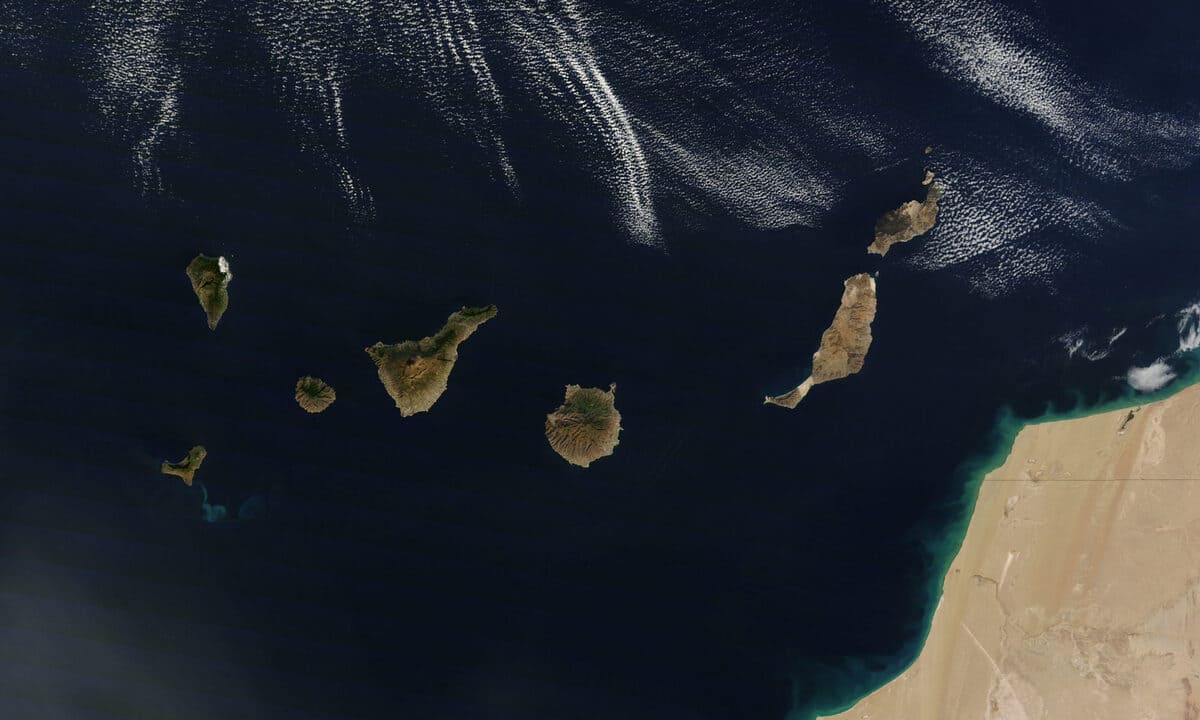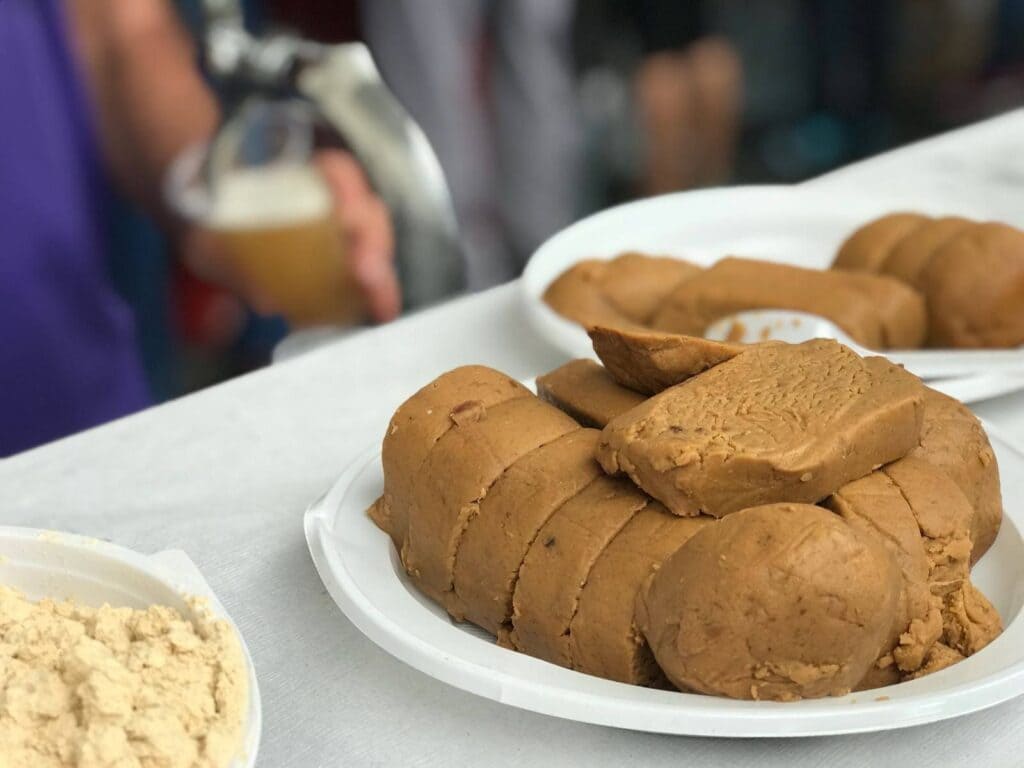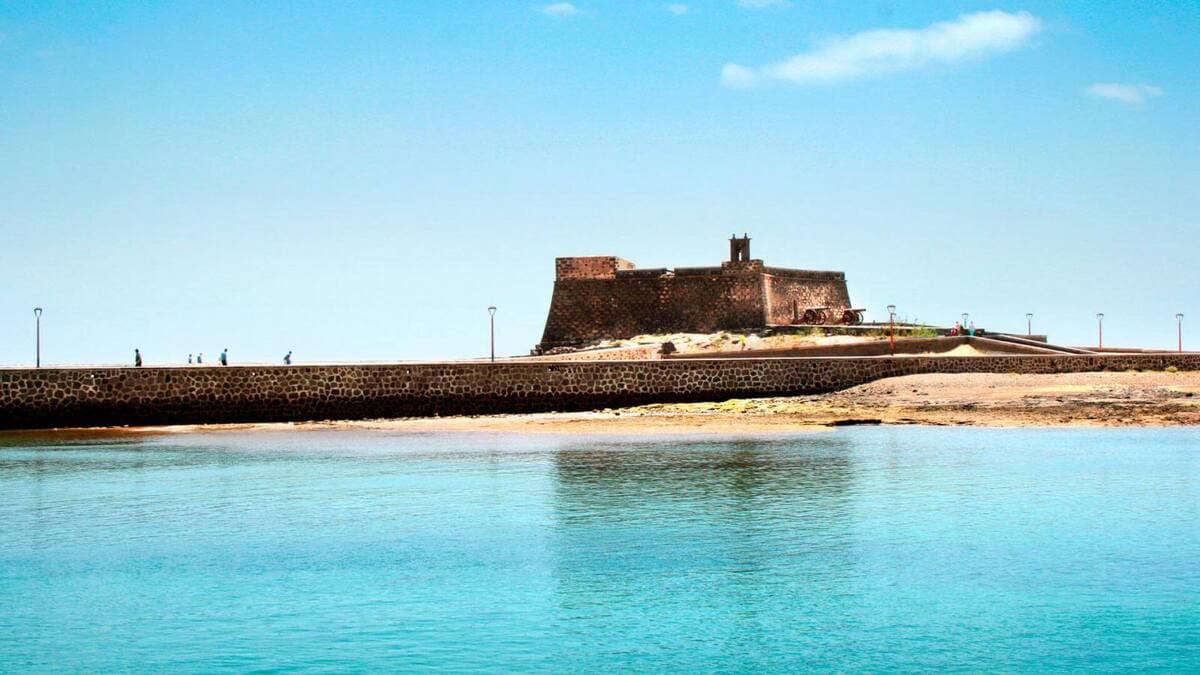Among the great variety of Canarian cheeses, one of them undoubtedly stands out for being a cheese that everyone likes: Palmero cheese. An easy cheese, with a smoky touch, very simple and perfect to combine with mojos. As its name suggests, this cheese is produced on the island of La Palma and is made with raw milk from the Palmero goat, a breed native to the island. It has been consumed on the Isla Bonita for centuries.
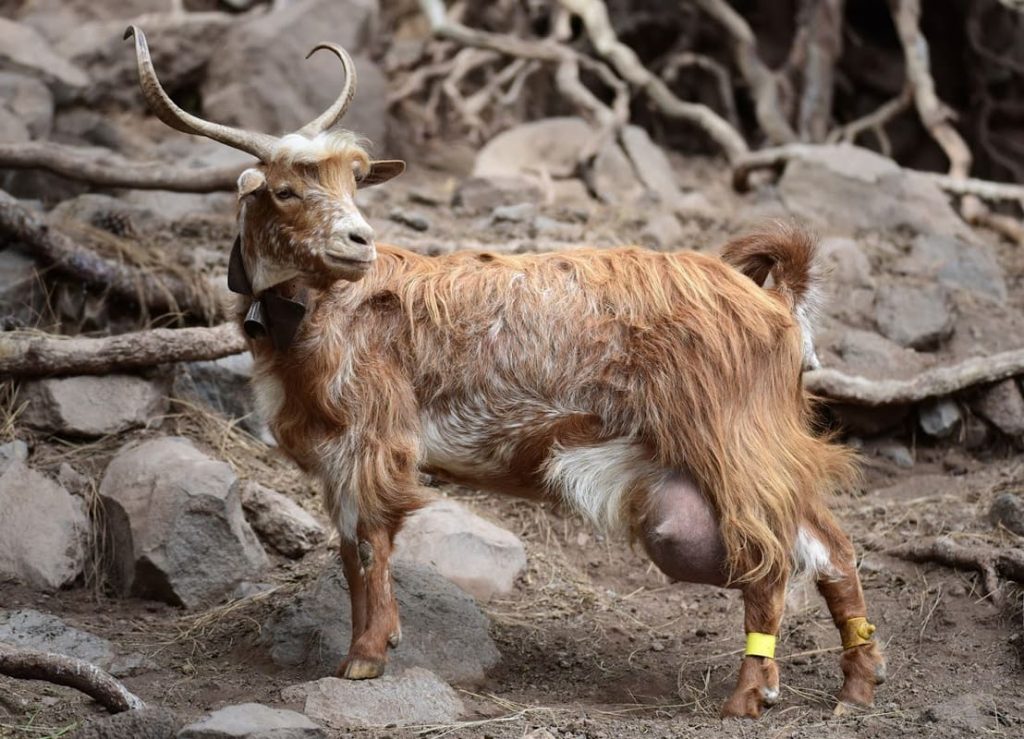
The palm tree goat, a jewel of a breed
The number of palm goats, a native breed with a history worth telling, is around 8,500 between La Palma and Tenerife, and they are undoubtedly very hardy animals, with milk of extraordinary quality. The wild palm goats of La Palma became extinct half a century ago, but the herd is in good health. Their genetic origin lies between the pre-Hispanic goats brought by the first inhabitants of the island and an influence of the Levantine goats brought by travellers to the Americas who stopped over on La Palma. Its characteristic physiognomy is that of a goat with a small head, elongated body, balanced, with a goatee in males and in many females.

Curiosities of the palm goat
Depending on their coat, palm goats are called 'negras fulas', 'moriscas', 'bermejas', 'pejeverdes', 'jardinas', 'cardosas' and 'herreras', but in general terms the predominant colour, and the typical one if we were to choose a goat that was a faithful representative of the breed, would be reddish. Of course, their coat has no influence on the flavour of their milk, which is notable for its high level of alpha-casein milk protein, of vital importance in the production of cheese.
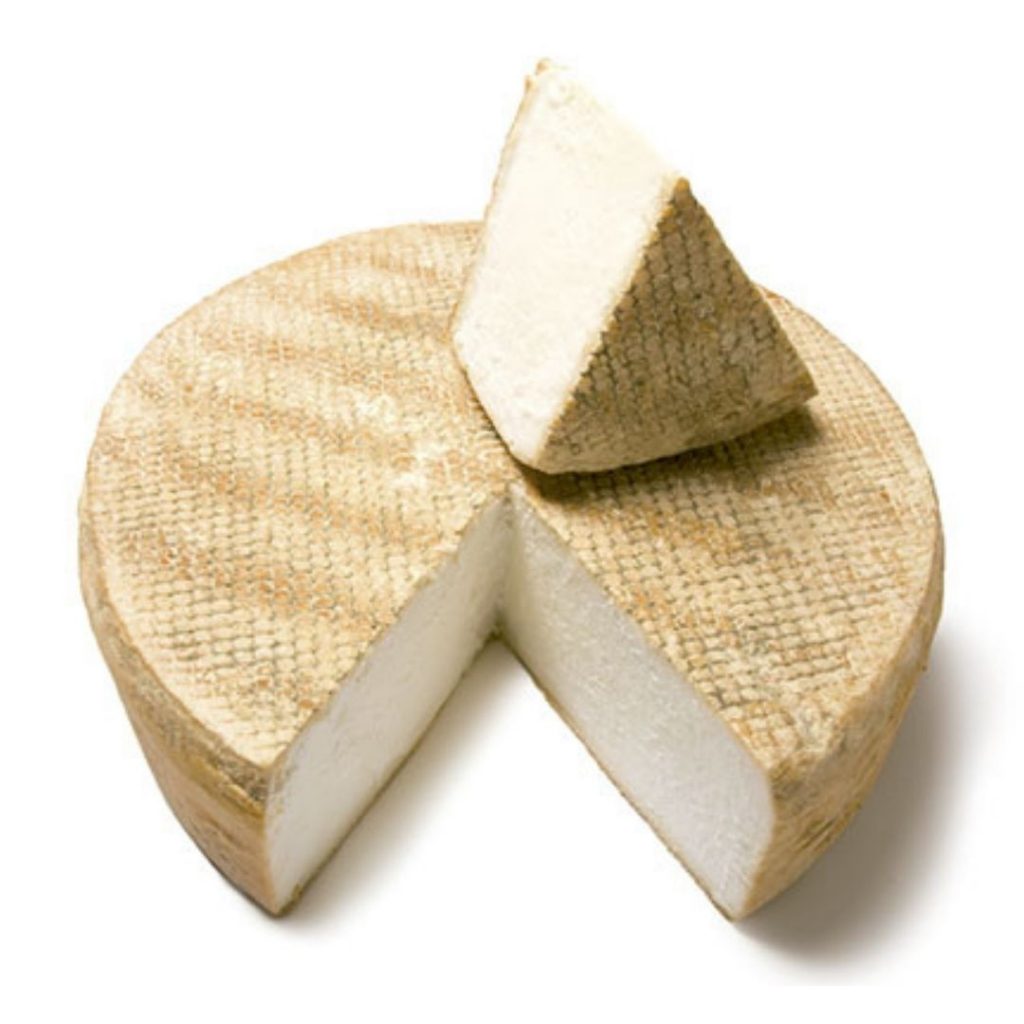
The wonders of Palmero cheese
Palmero cheese is made in a completely artisanal way with raw, unpasteurised milk from the Palmera goat. The goats are milked and the milk is first filtered and coagulated at a temperature of around 30 degrees in about three quarters of an hour. The curd is obtained, which is cut into small grains, ideal for draining or removing the whey. The drained curd product is pressed and then pressed and shaped. This is done using hoops (empleitas).
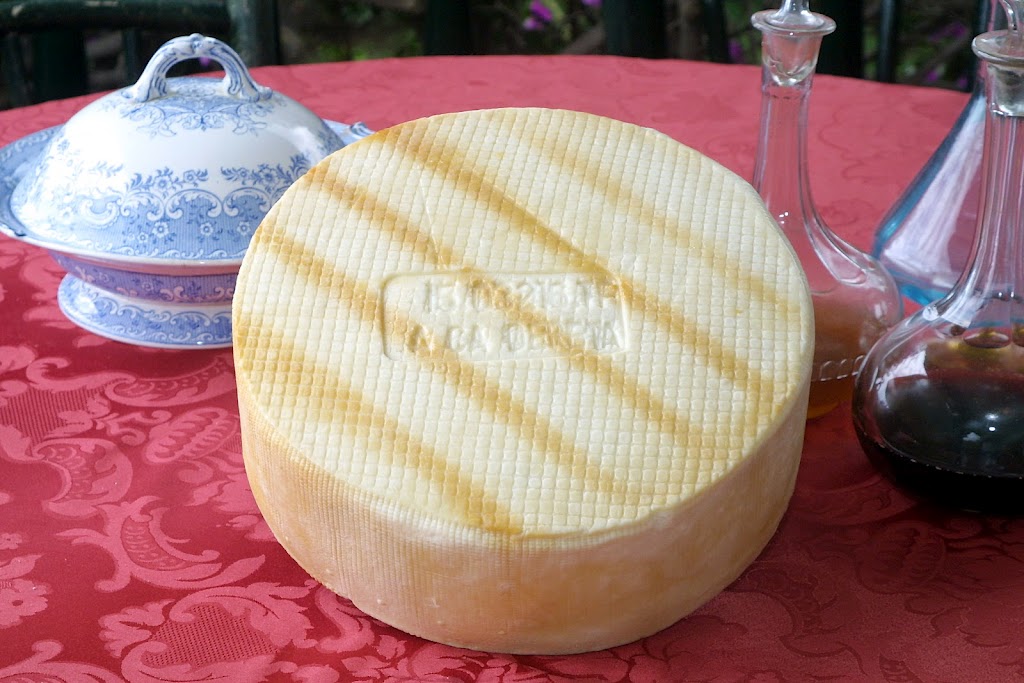
Flavours of La Palma
Now the cheese will acquire more flavours and aromas from the island of La Palma. The first thing to do is to salt it with the magnificent coarse sea salt from the salt mines of Fuencaliente, and the second thing to do is to smoke it. Three very Canarian products are used for smoking: the shells of the almond tree fruits (the basis of the fantastic and world-famous confectionery of La Palma), on the one hand, the prickly pear cactus , so characteristic of the island, and on the other hand, the needles of the Canary Island pine tree. The combustion of these three products produces a subtle smokiness that gives the cheese an unmistakable taste and smell that everyone loves. The only thing left to do now is to mature the cheeses. Where is this work done? Well, in the caves or places fitted out as such, where the traditional turning process is carried out. Here the rind of the Palmero cheese is also spread with two products: either olive oil or gofio, both of which are local products.
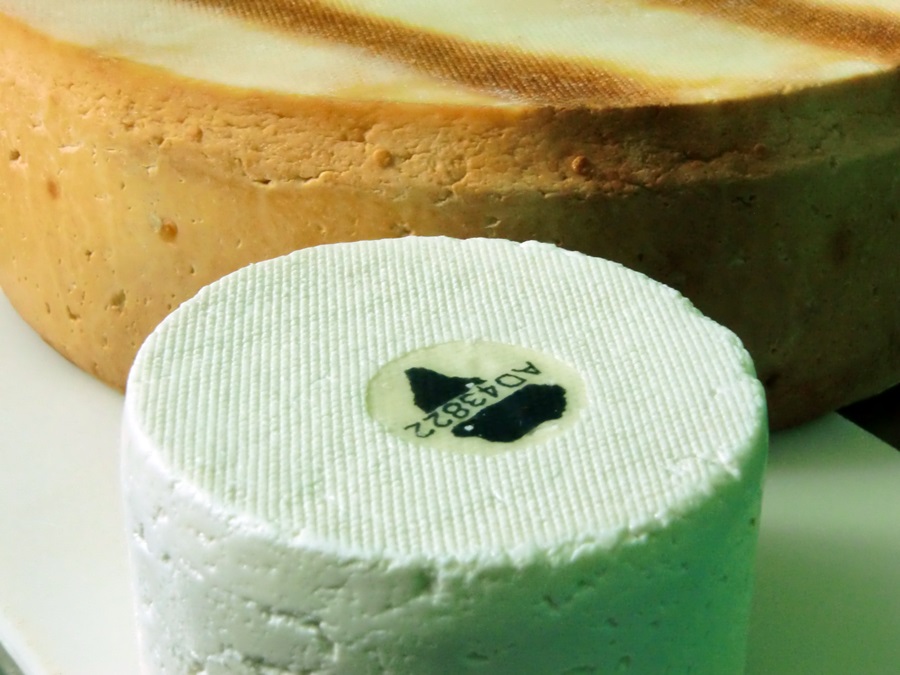
The tasty palmero cheese
The varieties of palmero cheese, which takes a cylindrical shape, are cured, semi-cured, soft and even fresh, with the rind (as we said, with olive oil or gofio) of a characteristic white colour which will darken when the pieces are smoked. The cheese is bright white, with a firm, elastic texture, a clean flavour and aroma, as befits goat's milk, a subtle acidity and not very salty. Another interesting fact about Palmero cheese: the cheese can weigh up to 15 kilos, making it one of the largest cheeses in Spain. It can be used to make fantastic recipes, such as mojo de queso. By the way, the best way to eat it is roasted or accompanied by red or green mojo.
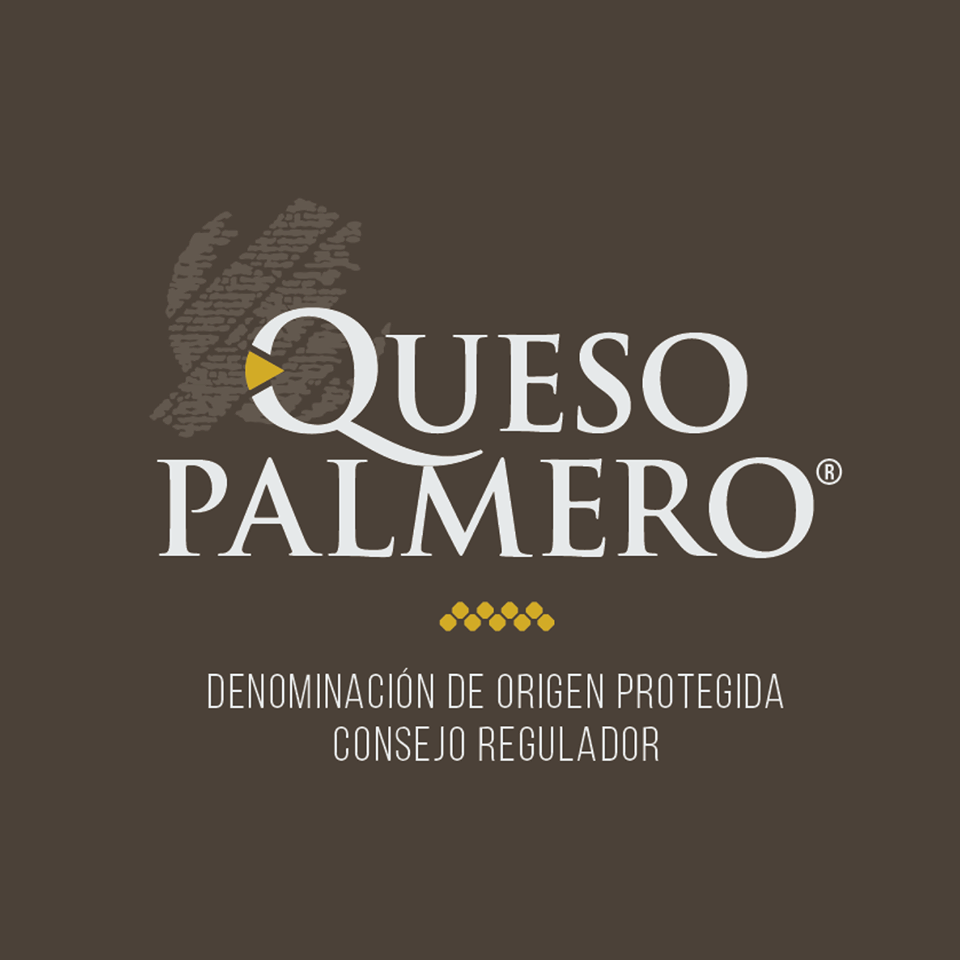
Palmero cheese, protected
Palmero cheese has had its own protected designation of origin since 2011, and has been protected by a Regulatory Council that ensures both its quality and its dissemination. Its production process is carried out in small family farms where its artisan character is preserved, and it is undoubtedly one of the prides of the island of La Palma. In fact, it is a cheese that has won international awards year after year. Don't miss it.
Photos: mapa.gov.es, aderlapalma.org, elapuron.com.

